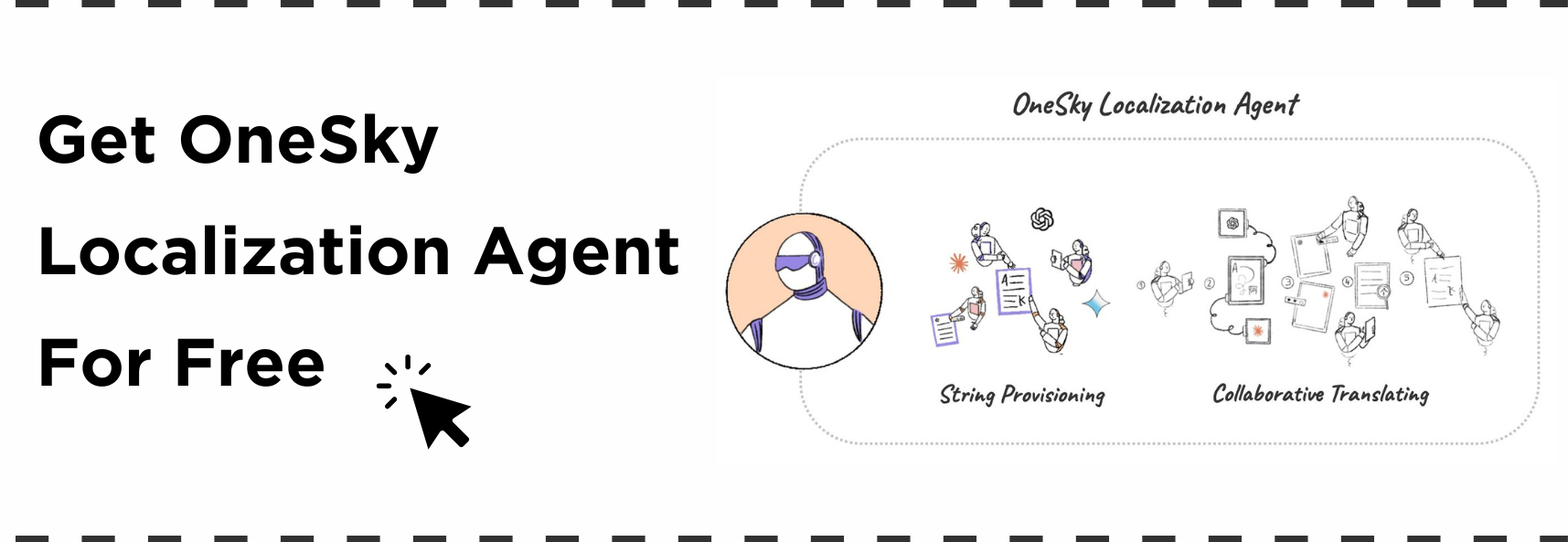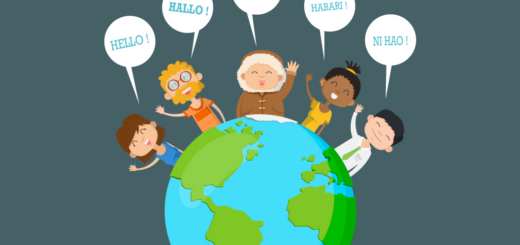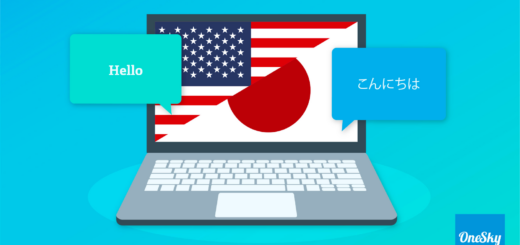Solving Your Translation Problem with OneSky
With rapid digitization, software and SaaS companies are expanding globally, often encountering numerous translation problems that can hinder their success. These issues range from translation challenges and cultural differences to technical inaccuracies. Addressing these translation issues effectively is crucial for maintaining brand integrity and ensuring user satisfaction.
According to a CSA Research report, 76% of consumers from 29 countries prefer buying products with information provided in their native language. Additionally, 40% state that they’ll never purchase from websites in other languages, emphasizing the need for accurate translations.
In this article, we’ll review some of the common translation problems, their causes, and advanced solutions offered by OneSky to help you overcome these challenges.
Identifying Common Translation Problems
A translation problem can arise in several forms, including errors in context, cultural misalignment, and technical inaccuracies. These issues can lead to mistranslations that alter the intended meaning of the source text, resulting in a poor user experience, diminished brand reputation, and hindered market penetration.
Errors in Context
Contextual errors occur when phrases or sentences are translated without considering their meaning within the entire text. For instance, idiomatic expressions or colloquialisms often don’t translate directly, resulting in confusing or incorrect translated text.
Cultural Misalignment
Cultural differences play a significant role in translation. A phrase that is acceptable in one culture may be offensive in another. For instance, marketing slogans that work well in English-speaking countries might not resonate the same way in Chinese, Russian, French, or Spanish markets. Understanding and adapting to these cultural nuances is crucial for maintaining brand integrity and connecting with the target audience. It also involves adjusting various elements, such as the formatting for date, time, numbers, and currency, to avoid misunderstanding and frustration.
Technical Inaccuracies
Reliance on inadequate machine translation tools and lack of industry-specific knowledge can lead to technical inaccuracies. These issues are particularly prevalent in specialized fields such as legal documents, medical texts, or software localization. For example, a mistranslated term in a software interface can lead to user confusion and decreased satisfaction.
Impact on User Experience and Brand Reputation
Translation problems can diminish user experience by causing frustration and confusion. Poor translations can lead to misunderstandings, making users less likely to trust the product or service. Imagine a software where instructions are poorly translated; users are very likely to struggle to understand even the basic functions, leading to dissatisfaction and negative reviews.
This erosion of trust can have long-term negative effects on brand reputation and hinder market penetration.
Causes of Translation Problems
Several factors contribute to translation problems, including reliance on inadequate machine translation tools, insufficient localization strategies, and lack of industry-specific knowledge. Understanding these factors is essential for addressing and overcoming translation challenges.
Inadequate Machine Translation Tools
Machine translation tools, such as Google Translate, can be helpful for quick translations but often lack the nuance needed for accurate and contextually appropriate translations. These tools might translate words and phrases word-for-word, missing out on the subtleties of idiomatic expressions and colloquialisms.
Insufficient Localization Strategies
Localization goes beyond mere translation; it involves adapting content to fit the cultural and linguistic context of the target language. Without a robust localization strategy, translations can result in cultural misalignment and fail to resonate with the target audience. For instance, if product descriptions don’t account for cultural preferences, it can lead to a disconnect with potential customers in different markets.
Lack of Industry-Specific Knowledge
Translators without specialized knowledge in certain industries, such as legal, medical, or technical fields, may produce technically inaccurate translations. This can lead to misunderstandings and reduced effectiveness of software products. For example, translating legal documents requires an understanding of both the legal systems and terminology of the source language and target language.
Advanced Solutions with OneSky
OneSky is an advanced, comprehensive translation management system (TMS) designed to overcome the common translation challenges software and SaaS companies face. It provides several features that ensure high-quality and accurate translations.
Context Management
OneSky’s system includes robust context management tools that allow translators to understand the full context of the source text such as screenshots and notes. This helps avoid errors in context and ensures that translations are accurate and relevant.
Glossary Support
OneSky offers extensive glossary support, which helps maintain consistency across translations by providing a centralized database of key terms and their approved translations. This feature is particularly useful for managing compound words, nouns, pronouns, and prepositions that may have different meanings in different languages.
Streamlined localization workflow
OneSky’s TMS can streamline your localization process. With its advanced features like automated workflows, integration with different platforms, and automation, OneSky ensures you can manage your projects hassle-free and your localized content is accurate, consistent, and culturally appropriate.
Translation service: Integrating AI and Human Expertise
Combining AI technology with human translation expertise offers significant benefits in tackling complex translation problems. AI provides speed and consistency, quickly handling large volumes of text and identifying patterns that human translators might miss. However, human translators bring nuanced understanding and cultural sensitivity that AI alone cannot replicate.
OneSky leverages this hybrid approach to enhance translation quality and efficiency. Our system integrates advanced AI tools for initial translation and translation memory while ensuring that native speakers and certified translators review and refine the content. This collaboration ensures high-quality, culturally appropriate translations that resonate with the target audience.
By using AI to manage repetitive and time-consuming tasks, human translators can focus on the intricacies of cultural differences and context-specific nuances. This balance reduces the problems of translation that purely machine-based approaches often face, such as literal translations that miss idiomatic or colloquial meanings. Consequently, OneSky’s hybrid method not only speeds up the translation process but also significantly improves the overall quality and relevance of the translated text.
In short, instead of integrating AI on your own and worrying about the heavy investment and translation quality, OneSky offers a complete top notch AI-Human translation service that saves you time and cost.
Best Practices for Effective Translation Management
An effective translation management system is crucial if you’re aiming to attain a globally positive imprint. Here are some guidelines for managing your translation projects effectively:
Establish Clear Objectives and Scope
Define the goals and scope of your translation project from the outset. This includes understanding the target audience, specifying which languages are required, and identifying any specific requirements for legal documents or technical content.
Clear objectives help streamline the translation process, ensuring that all stakeholders are aligned. Moreover, having a well-defined scope prevents scope creep and keeps the project on track.
Utilize Translation Memory and Glossaries
Implementing translation memory tools helps maintain consistency by storing previously translated text for reuse. Maintaining a glossary of critical terms ensures uniformity in translating compound words, nouns, pronouns, and prepositions.
These tools enhance consistency, save time, and reduce costs by avoiding repetitive translations. A well-maintained glossary also serves as a reference for translators, ensuring that terminology remains consistent across different projects and languages.
Leverage Professional Translation Services
Engage certified translators or native speakers with expertise in your industry. This ensures accurate translations that consider cultural differences and context-specific nuances, preventing common translation issues.
Professional translators bring a depth of understanding that machine tools can’t match, particularly for complex or sensitive content. Their expertise is invaluable in ensuring that translations are accurate, culturally appropriate, and effectively communicate the intended message.
Combine AI and Human Expertise
Utilize AI tools for initial translation and repetitive tasks, but ensure human experts review and refine the content. This hybrid approach balances efficiency with cultural and contextual accuracy, addressing the most common challenges of relying solely on machine translations.
By leveraging AI for speed and humans for precision, this approach ensures high-quality translations that are both efficient and reliable. The combination allows for handling large volumes of text while maintaining the nuanced understanding required for effective communication.
Conduct Thorough Quality Assurance
Implement rigorous quality assurance processes to review translated content for accuracy and cultural relevance. This includes regular reviews by native speakers and feedback from local market representatives.
Quality assurance is critical to catching errors that automated tools might miss and ensuring that translations meet the highest standards. Continuous feedback loops help refine processes and improve the overall quality of translations over time.
Streamline Your Global Expansion with OneSky
Problems and hurdles are vital factors that inspire innovations and improvements. Solving translation problems can be a stepping stone for your company into the international markets. Misunderstandings due to translation issues can undermine user experience and brand reputation.
OneSky offers comprehensive solutions at reasonable prices that ensure accurate and culturally relevant translations, helping you overcome these challenges and achieve global success.
Take the first step towards solving your translation problems by leveraging OneSky’s advanced tools and ensuring consistent, high-quality translations that resonate with your target audience.









 Written by
Written by 


